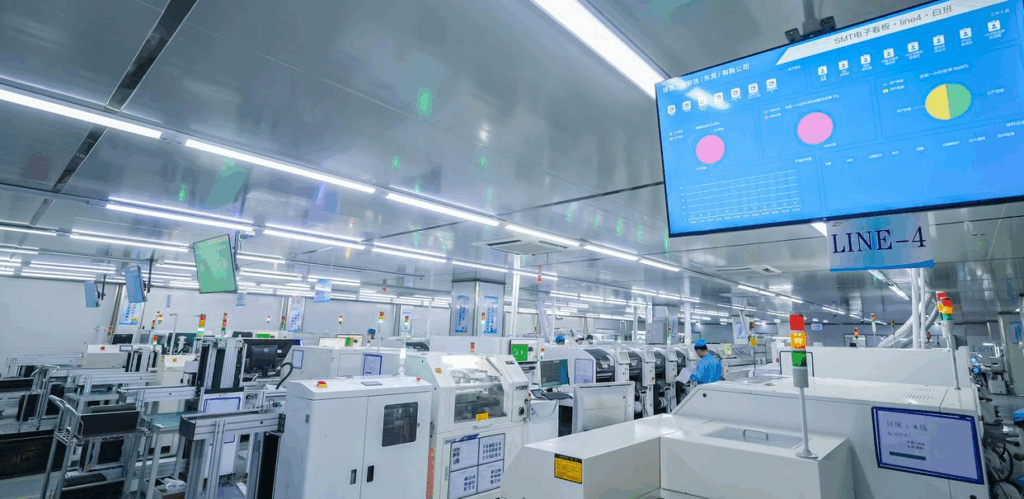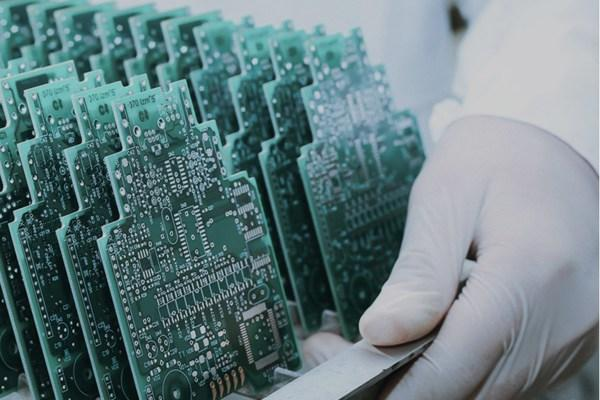SMT en in het bijzonder SMT pick-and-place machines zijn officieel bezig aan een opwaartse trend. De reden hiervoor ligt in de volgende statistieken: van 2021 tot 2025 zal de wereldwijde markt voor SMT assemblageapparatuur naar verwachting groeien met USD 627,46 miljoen, waarbij de markt tot 2024 naar verwachting zal groeien met een samengesteld jaarlijks groeipercentage (CAGR) van 6,04%. Op basis van een analyse van verschillende regio's en hun bijdragen aan de wereldwijde markt, schat Technavio dat China, de Verenigde Staten, Duitsland, Japan en het Verenigd Koninkrijk de leidende markten voor SMT assemblageapparatuur zullen blijven. Tot 2024 zullen de segmenten consumentenelektronica, auto's en communicatie naar verwachting een van de belangrijkste aanjagers van de markt worden, met aanzienlijke gevolgen voor eindgebruikers. Er zijn in totaal zeven aspecten die deze industrie beïnvloeden.
Eerste aspect: hoge precisie en flexibiliteit. Elektronische apparaten evolueren naar hogere precisie, hogere snelheden, groter gebruiksgemak, meer milieuvriendelijkheid en grotere flexibiliteit om zich aan te passen aan de concurrentie in de sector, kortere lanceringscycli voor nieuwe producten en milieuvereisten. De pick-and-place-kop kan automatisch worden omgeschakeld en kan dispenseren, printen en feedback detecteren, wat resulteert in een hogere stabiliteit van de plaatsingsprecisie en een grotere compatibiliteit tussen componenten en substraatvensters.

Tweede aspect: hoge snelheid en miniaturisatie. Om een hoge efficiëntie, laag energieverbruik, minimale benodigde ruimte en lage kosten te bereiken, is er een toenemende vraag naar snelle, multifunctionele pick-and-place-machines die zowel een hoge pick-and-place-efficiëntie als multifunctionaliteit bieden. Pick-and-place-productiemodellen met meerdere sporen en meerdere werkstations kunnen productiviteitsniveaus bereiken van ongeveer 84.000 CPH, zoals de NT-T5 van Nectec, terwijl de voetafdruk en het stroomverbruik van de apparatuur steeds kleiner worden.
Het derde aspect is de integratie van halfgeleiderverpakking en SMT. De miniaturisering, multifunctionaliteit en precisie van elektronische componenten hebben de integratie van halfgeleiderverpakking en oppervlaktemontagetechnologie gestimuleerd. Technologieën zoals POP (Pop-up Package) en sandwichprocessen worden op grote schaal gebruikt in high-end slimme producten, en de meeste merknaambedrijven voor oppervlaktemontagemachines bieden flipchipapparatuur aan.
Vierde aspect, weg naar intelligentie en automatisering. Aangedreven door concepten als Industrie 4.0 en Made in China 2025 wordt SMT-apparatuur gecombineerd met technologieën als kunstmatige intelligentie en het internet der dingen om geautomatiseerde productie, intelligente detectie en foutvoorspelling te bereiken, waardoor de productie-efficiëntie en -kwaliteit worden verbeterd en tegelijkertijd de arbeidskosten worden verlaagd.
Vijfde aspect, groene productie. De elektronica-industrie legt meer nadruk op duurzame ontwikkeling. Fabrikanten van SMT-apparatuur richten zich op milieubescherming en ontwikkelen energiezuinige, weinig vervuilende apparatuur om het energieverbruik en de schadelijke uitstoot te verminderen, zoals het gebruik van milieuvriendelijk soldeer en het optimaliseren van het beheer van het energieverbruik van apparatuur.

Zesde aspect, integratie van geavanceerde detectietechnologie. Om de kwaliteit van elektronische producten te garanderen, worden geavanceerde testtechnologieën zoals 3D SPI, AOI en AXI diep geïntegreerd met SMT-apparatuur voor real-time online testen en feedback, waardoor de detectie van defecten en de nauwkeurigheid worden verbeterd terwijl de testprecisie en -snelheid in balans zijn.
Het laatste aspect is systeemintegratie. SMT-apparatuur ontwikkelt zich in de richting van geïntegreerde systemen die assemblage, logistiek, verpakken en testen combineren. Met systemen zoals MES is het mogelijk om volledige traceerbaarheid en controle van processen te bereiken, de productiecoördinatie en -efficiëntie te verbeteren en productieprocessen te optimaliseren.





